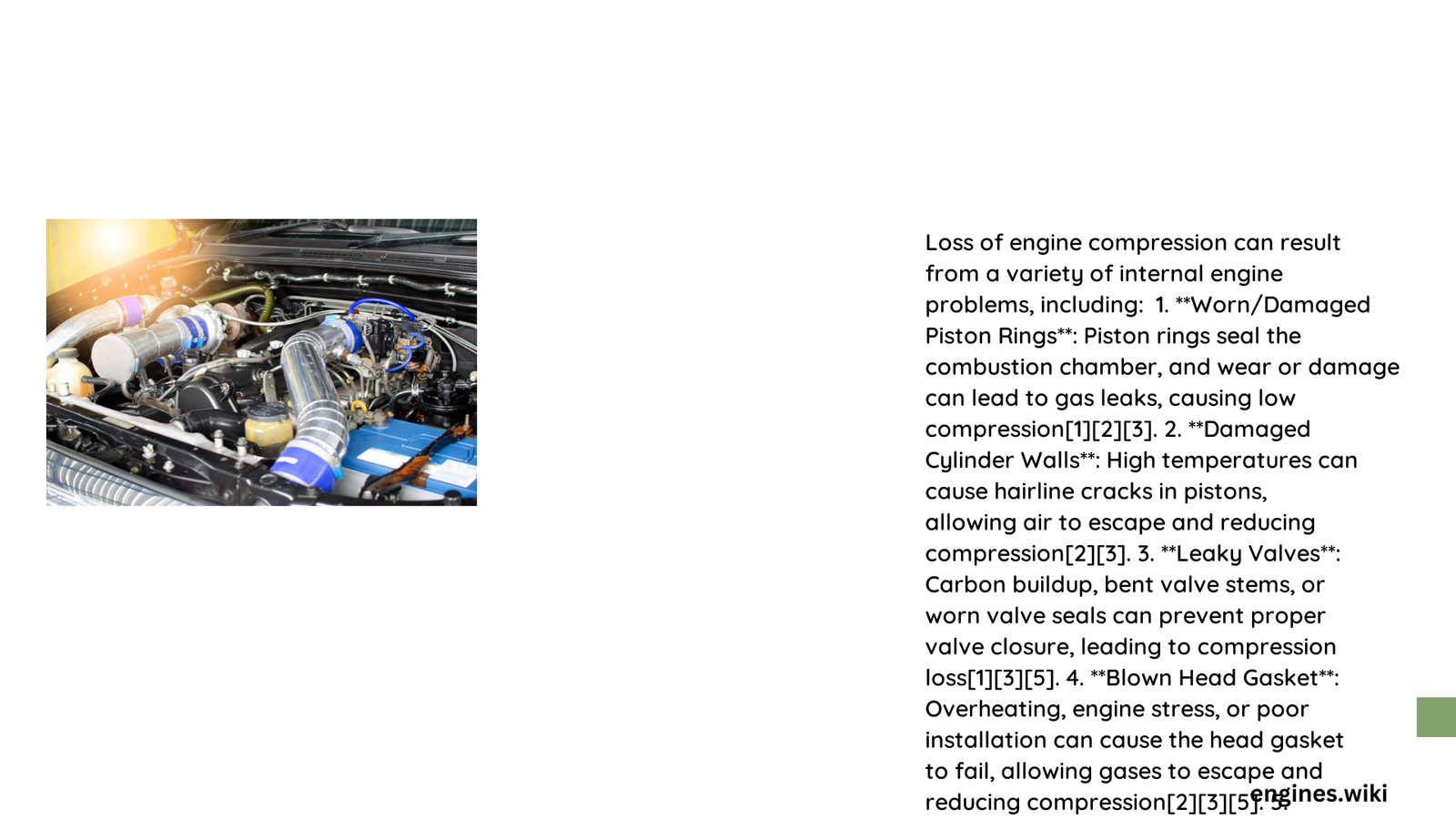Engine compression loss represents a critical mechanical failure that can dramatically reduce vehicle performance and potentially lead to catastrophic engine damage. Understanding the precise mechanisms behind compression degradation is essential for automotive technicians and vehicle owners seeking to maintain optimal engine functionality and prevent costly repairs.
What Causes Significant Engine Compression Reduction?
How Do Piston Ring Tolerances Impact Compression?
Piston rings play a crucial role in maintaining proper engine compression. When these components experience wear or exceed recommended tolerances, significant compression loss occurs. Key factors include:
- Ring Gap Measurements
- Minimum recommended gap: 0.0035 inches per inch of cylinder diameter
- Maximum acceptable gap varies by ring diameter
- Excessive gaps lead to reduced sealing efficiency
| Ring Diameter Range | Maximum Acceptable Gap |
|---|---|
| 3.5425 – 4.3299 inches | 0.022 – 0.026 inches |
Quantitative Wear Analysis
Research indicates that for every 0.001-inch increase in cylinder diameter, ring gap expands approximately 0.003 inches. This geometric progression demonstrates how incremental wear can compound compression loss.
What Role Do Cylinder Head Gaskets Play?
Head gasket failures represent another critical source of compression loss. Diagnostic indicators include:
- Inconsistent cylinder pressure readings
- Coolant contamination
- Visible external leakage
- Compression test variations exceeding 10-15%
How Do Valve Seals Contribute to Compression Degradation?
Valve seal deterioration directly impacts compression through:
- Material Breakdown
- Silicone and Viton seals degrade under high temperatures
- Typical lifespan: 50,000 to 200,000 miles
What Environmental Factors Accelerate Compression Loss?
Critical environmental contributors include:
- Extreme temperature operations
- Inappropriate oil viscosity
- High-mileage engine usage
- Inadequate maintenance practices
Diagnostic Strategies for Compression Assessment
Recommended diagnostic techniques:
- Comprehensive compression test
- Leak-down pressure evaluation
- Visual component inspection
- Precise measurement of ring and seal tolerances
Prevention and Mitigation Strategies
Effective approaches to minimize compression loss:
- Regular maintenance schedules
- Use high-quality lubricants
- Monitor engine performance indicators
- Address minor wear symptoms promptly
Technical Insights

Compression loss represents a progressive mechanical phenomenon requiring systematic evaluation. Professional diagnostics and proactive maintenance can significantly extend engine longevity and performance.
Precision Measurement Protocols
- Utilize calibrated compression testing equipment
- Follow manufacturer-specific tolerance guidelines
- Document incremental wear progression
Economic Implications
Unaddressed compression loss can result in:
– Reduced fuel efficiency
– Increased operational costs
– Potential catastrophic engine failure
Conclusion
Understanding the multifaceted nature of engine compression loss empowers vehicle owners and technicians to implement targeted maintenance strategies, ultimately preserving engine integrity and performance.
